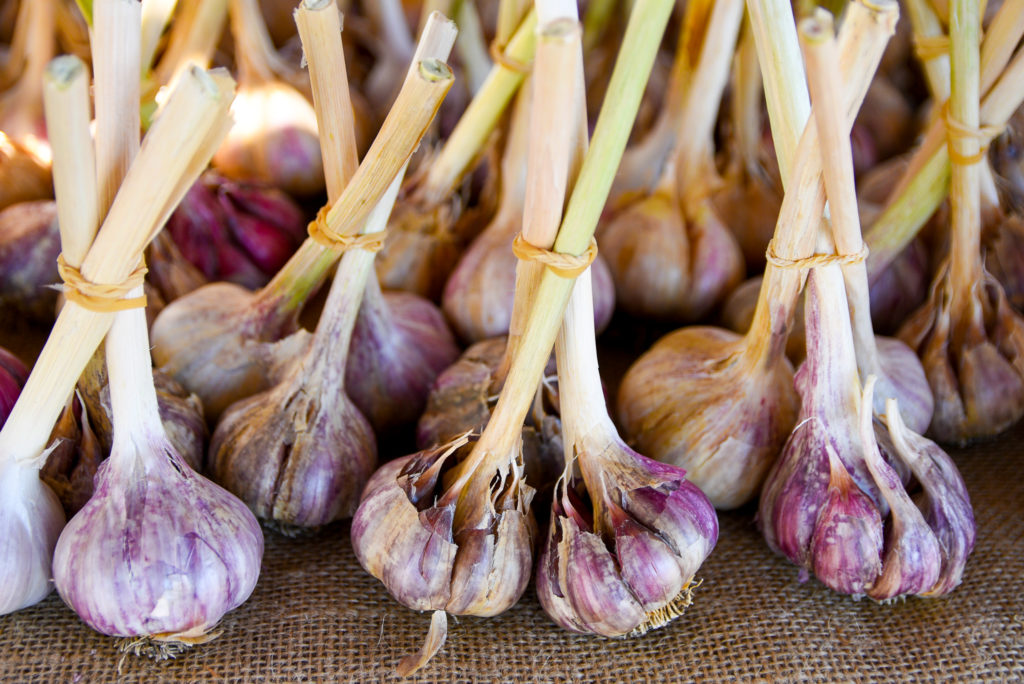Garlic

Garlic, affectionately referred to as the stinking rose, is one of the oldest cultivated plants in history. Long before there were vampire slayers, garlic was used by ancient Egyptians for sacred practices – like placing cloves in Pharoahs’s tombs – as well as for medicinal purposes -as cloves were given to slaves to increase endurance as strength.
Today garlic is mostly used for its pungent flavor, although it is still employed for its healing properties as well. As a member of the lily family, along with leeks, onions, and chives, garlic is used to boost the aromatic quality of a dish. It grows as a bulb, which is further divided into cloves. When it is harvested, the bulb is covered in a flaky, white skin that must be removed before cooking.
Garlic can be divided into two main categories – soft neck and stiff neck. Soft neck varieties are more commercially available because they require less labor, store better, and have higher yields. But stiff neck varieties, thought to be closer to their wild ancestor, have more flavor.
In early spring, stiff neck varieties of garlic send up flower stalks known as scapes. To send the plant’s energy into bulbing instead of flowering, scapes must be clipped and are sometimes sold at market. Elegant and delicious vegetables, the texture of scapes is something like green beans, but they have a mild and pleasant garlic flavor that chefs and home cooks are growing fonder of every year.
